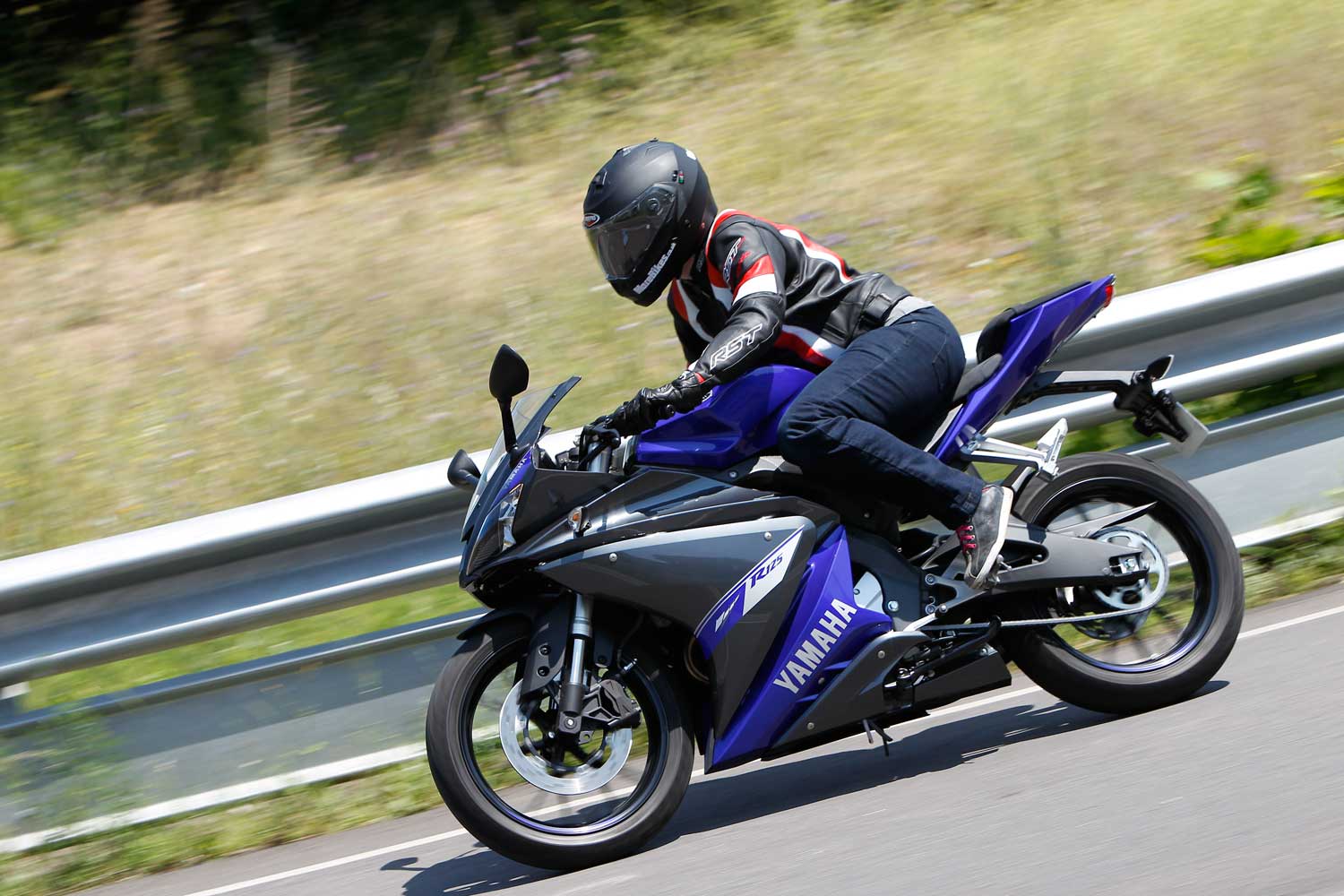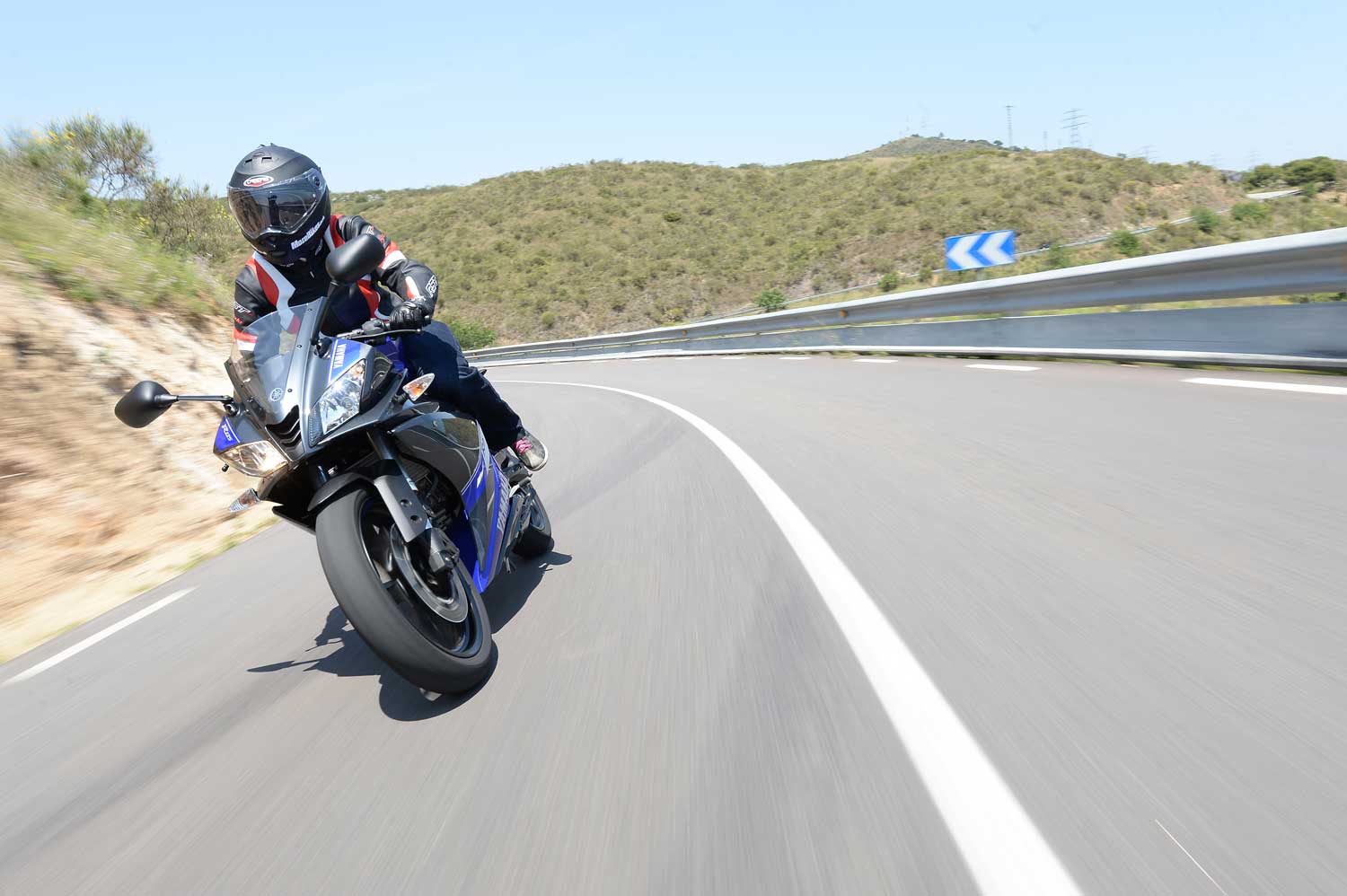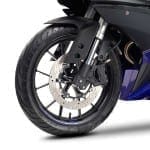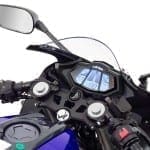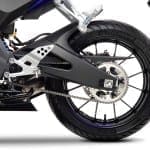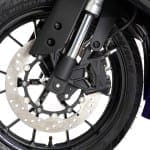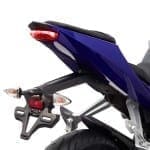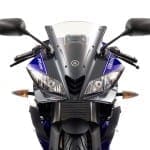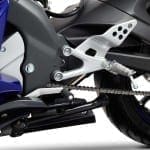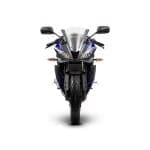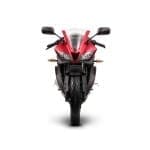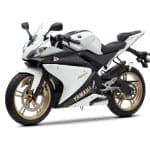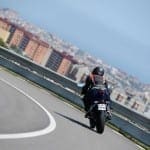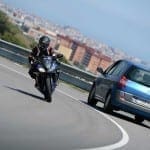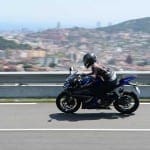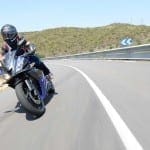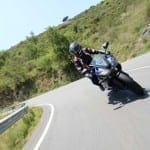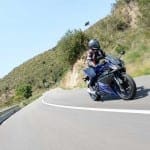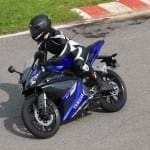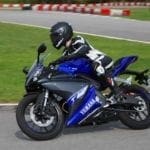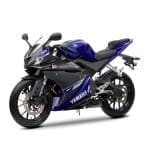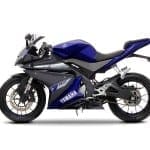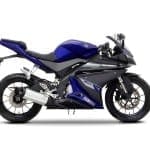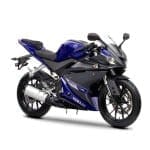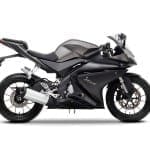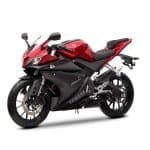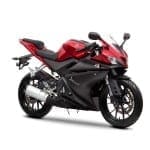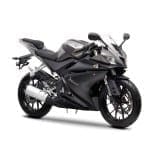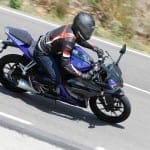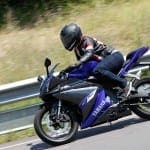£4349 | 14.8bhp@9000rpm | 9.2bhp@8000rpm |124.7cc liquid-cooled, 4-stroke single-cylinder
Tested by: Carli Ann Smith
In 2008, Yamaha launched their YZF-R125, to date selling more than 45,000. Following feedback from over 2700 dealers in Europe, Yamaha decided to refresh the YZF for 2014, and despite there being over 70 new components on the machine, and a claimed extra 11mpg available from the engine, the price for the model remains the same at £4349.
The R-125 aims to appeal to new bikers – those looking to start on their sportsbike journey. Product Planning Manager, Oliver Grill, commented, “Racing is one of Yamaha’s key values – it’s part of our DNA and we won’t give up on the segment. Despite the market, we will continue to bring out new bikes.”
Tell me about the engine
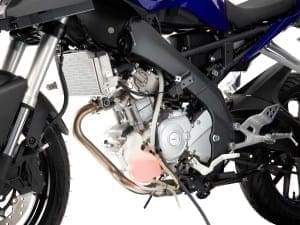 The YZF has the same new engine as the MT-125: a single cylinder 4-stroke with a strong emphasis on efficiency. I got a whopping 141mpg from the machine… I wasn’t riding particularly economically (not on purpose anyway) and our test route took us along the bustling streets of Barcelona, filled with traffic lights and commuters; toured the twisty roads in the mountains and we even did a few laps on a local Spanish track. The power delivery is smooth and there’s power throughout the revs meaning that you don’t always have to change down for safe overtakes – watch out Jorge Lorenzo.
The YZF has the same new engine as the MT-125: a single cylinder 4-stroke with a strong emphasis on efficiency. I got a whopping 141mpg from the machine… I wasn’t riding particularly economically (not on purpose anyway) and our test route took us along the bustling streets of Barcelona, filled with traffic lights and commuters; toured the twisty roads in the mountains and we even did a few laps on a local Spanish track. The power delivery is smooth and there’s power throughout the revs meaning that you don’t always have to change down for safe overtakes – watch out Jorge Lorenzo.
The six-speed gear box is smooth and I didn’t hit a false neutral all day. National speed limits are easily obtained meaning that you can keep up with the rest of traffic and pick your way through gaps with ease.
What’s the chassis like?
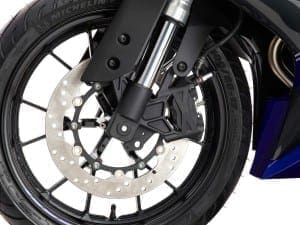 Both the MT and the 2014 YZF have been developed from the 2008 YZF-R125, and feature the same engine, wheel rims, brakes and exhaust, but they both feel completely different. While the MT has wide and raised handlebars, the YZF – as you’d expect – puts you in that typical sports bike position. With the weight forward on your wrists, your body against the tank and your feet on the aluminium forged footpegs you feel like a racing star.
Both the MT and the 2014 YZF have been developed from the 2008 YZF-R125, and feature the same engine, wheel rims, brakes and exhaust, but they both feel completely different. While the MT has wide and raised handlebars, the YZF – as you’d expect – puts you in that typical sports bike position. With the weight forward on your wrists, your body against the tank and your feet on the aluminium forged footpegs you feel like a racing star.
The suspension has been re-developed on both models, featuring a new link design, which allows for the carrying of a pillion without bottoming out. When you put your weight on the bike the suspension sags and reduces the seat height meaning that even at 5’6” I could place my feet down with confidence – something I often struggle with on other sports bikes. Out on the road, the linked monoshock rear suspension and KYB USD forks absorbed the bumps and dealt with changes in road surface brilliantly. The race-styled wheels rims have been specially developed, and have a ‘Y’ shaped design running with a Michellin 100/80-17 front and a 130/70-17 rear tyre, which provided plenty of grip.
Should I buy one?
 It might be that you’re looking for your first bike now that you have your A1 licence, or you’re after a sports styled commuter… this could be the answer. Whilst it might not look like a learner machine, the ride is friendly and inspires confidence so would suit those looking for their first sportsbike. The economical engine and the opportunity to add luggage from the accessories range also make it a viable commuter. Options include: a tank bag; a double bubble screen; roller protector; LED indicators; USB adaptor and a 12V DC socket – not forgetting the Akrapovic exhaust.
It might be that you’re looking for your first bike now that you have your A1 licence, or you’re after a sports styled commuter… this could be the answer. Whilst it might not look like a learner machine, the ride is friendly and inspires confidence so would suit those looking for their first sportsbike. The economical engine and the opportunity to add luggage from the accessories range also make it a viable commuter. Options include: a tank bag; a double bubble screen; roller protector; LED indicators; USB adaptor and a 12V DC socket – not forgetting the Akrapovic exhaust.
Looking at the bike, it’s easy to tell that it’s part of the YZF gang with its angular front air intakes, full fairings and design inspiration coming from the R6.
Colour options include ‘race blu’, matt grey and anodised red. The bikes are already in Yamaha dealers so head down and take a look… and a test ride.
So what’s it like to ride?
 Riding in and out of town was brilliant – although it was out on the open roads where I particularly liked the YZF. The rigidity of the front end has been increased from that on the previous model, and it gives confidence going into even the tightest of bends. It has a real ‘big bike’ feel, and I found I had plenty of room – even those who were 6ft didn’t look out of place on the machine.
Riding in and out of town was brilliant – although it was out on the open roads where I particularly liked the YZF. The rigidity of the front end has been increased from that on the previous model, and it gives confidence going into even the tightest of bends. It has a real ‘big bike’ feel, and I found I had plenty of room – even those who were 6ft didn’t look out of place on the machine.
The rear braking system is the same as the previous model – a single piston floating caliper – but the front brakes are new, featuring a floating 292mm disc with a radially-mounted four-pot caliper.
Looking down at the dash you can see all the vital information easily. Yamaha designers took inspiration from the simple layout of smart phones: Turned off the screens are black, but when you turn the key each of the three sections come to life. As on the MT, the centre screen shows rpm and speed, while the right hand side displays the fuel indicator, clock and odometer. The left consists of the engine temperature, maximum speed, average speed and fuel consumption data, which can be switched using the button on the right hand bar.
The fuel indicator and other graphics use angular graphs rather than the standard bars, which make information easily absorbed when you glance down. The gear shift indicator is handy and lets you get the most from the 125cc engine by flashing when it reaches 10,000rpm.
The riding position was extremely different to the MT – it felt sporty and lining up at traffic lights I felt like I was waiting on a start line. Sporty looks, along with nimble handling and superb fuel economy make this is a competitive choice.
Tech Spec
Price: £4349
Engine: Liquid-cooled, 124.7cc, 4-stroke, single cylinder
Power: 14.8bhp (11.0kW)@9000rpm
Torque: 9.2bhp (12.4Nm)@8000rpm
Kerb weight: 140kg
Seat height: 825mm
Tank size: 11.5 litres

